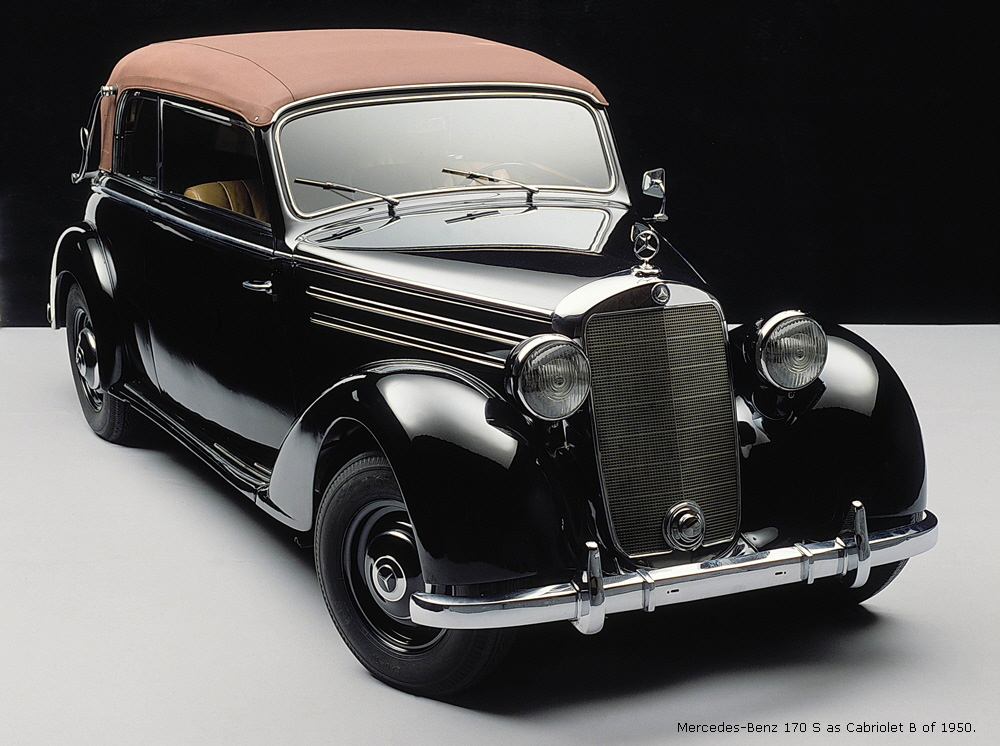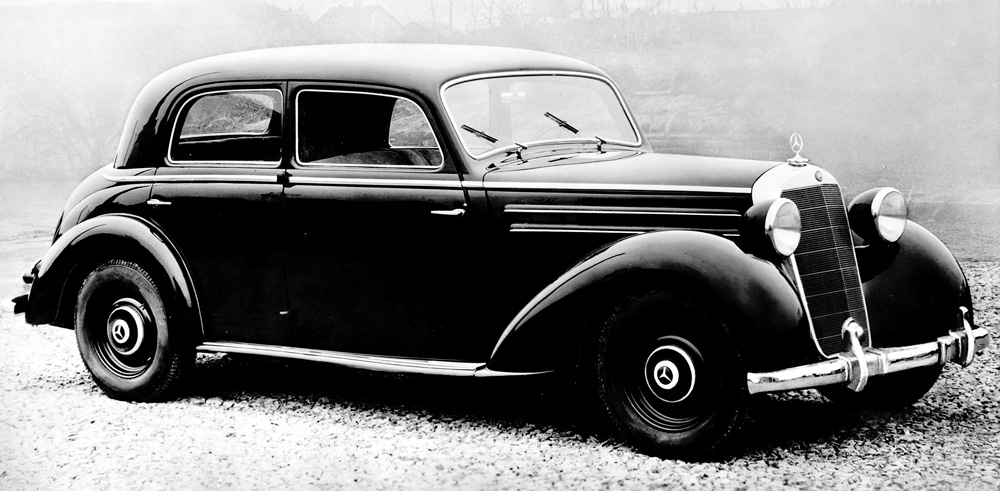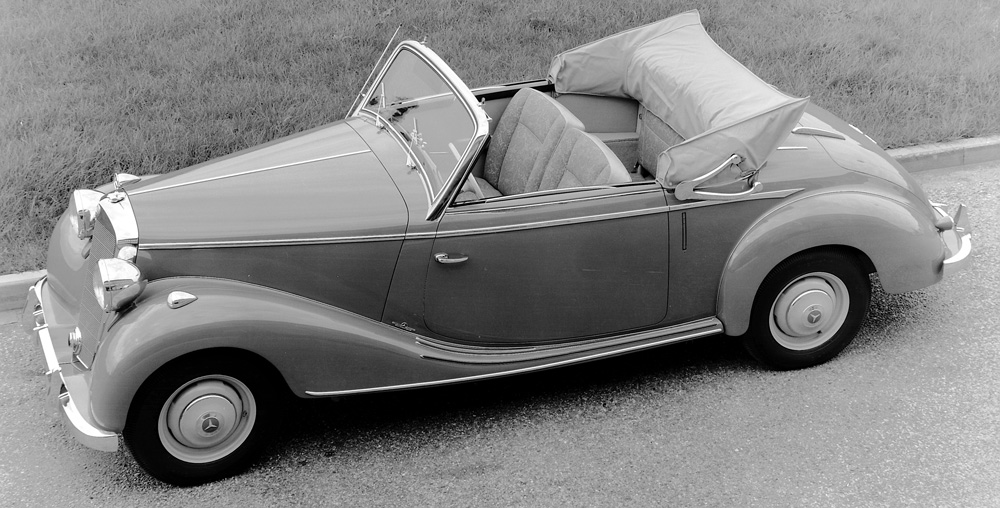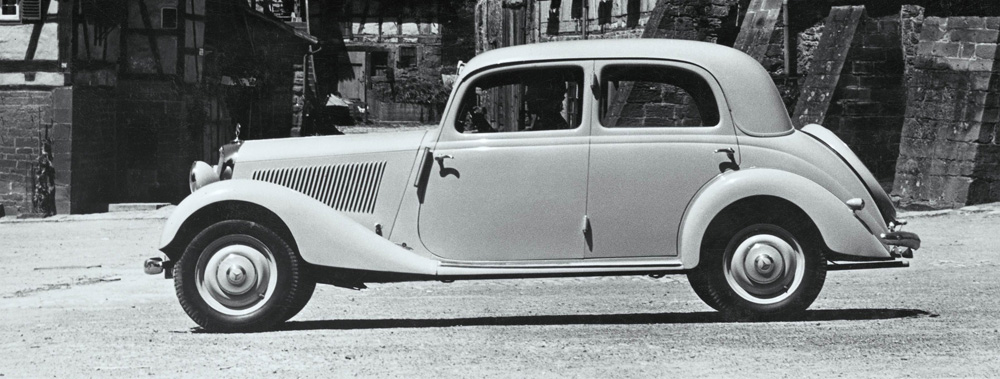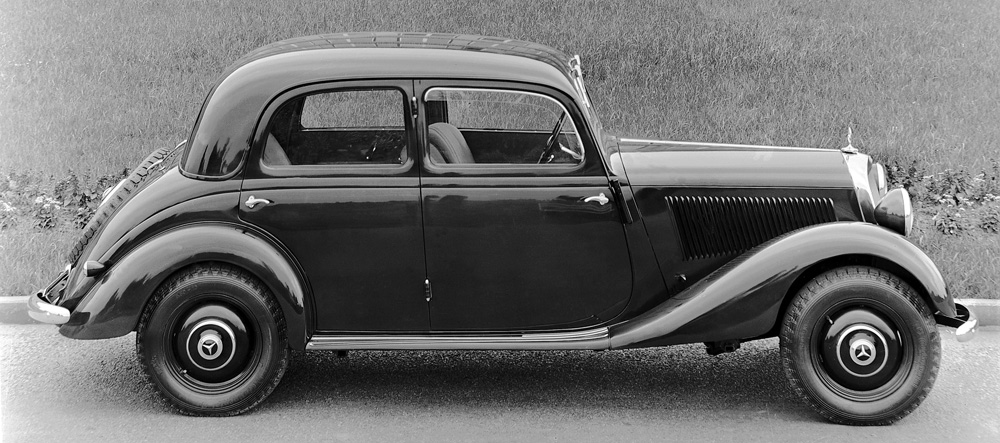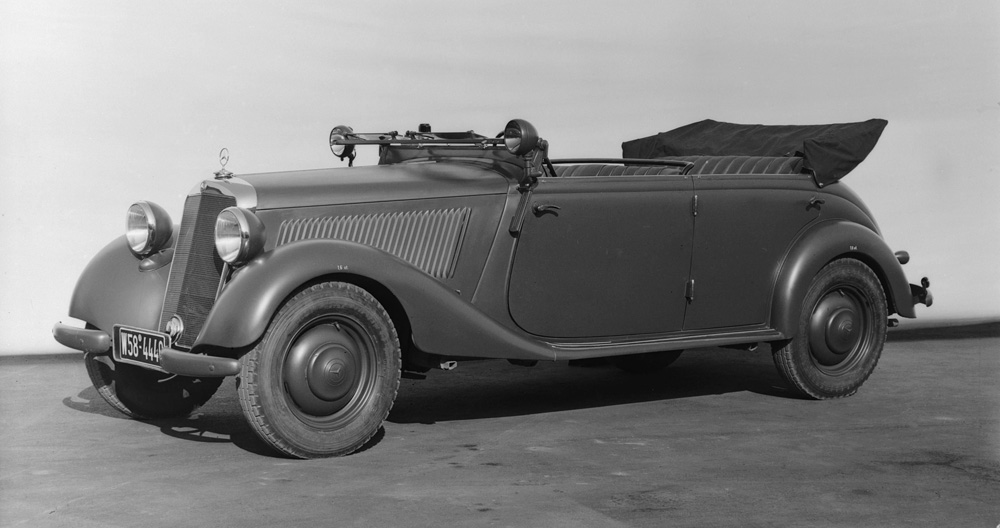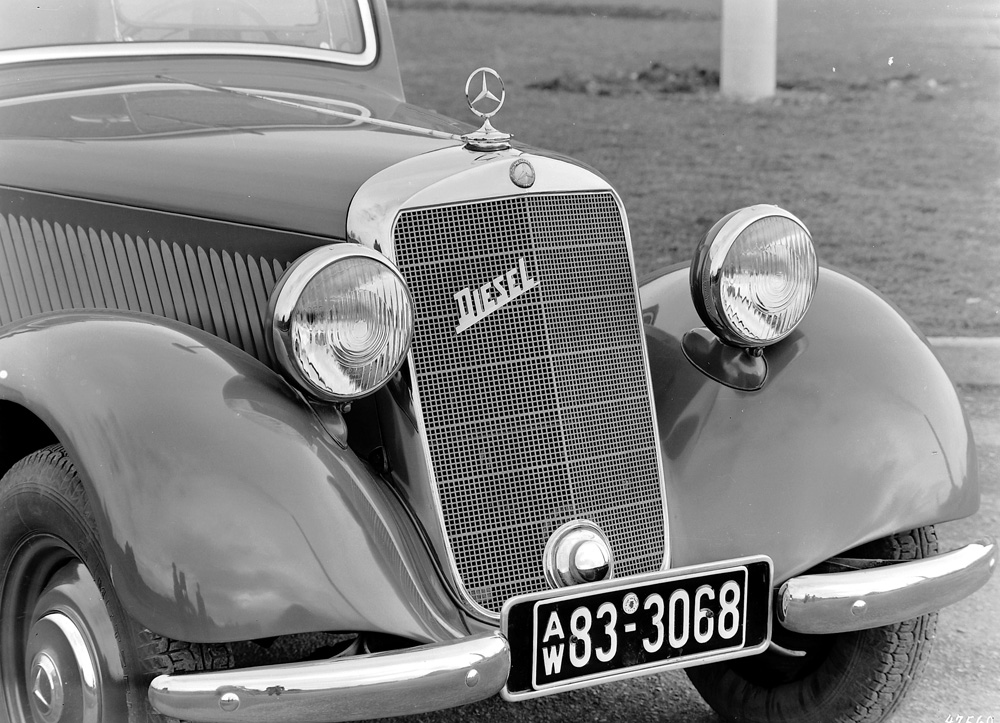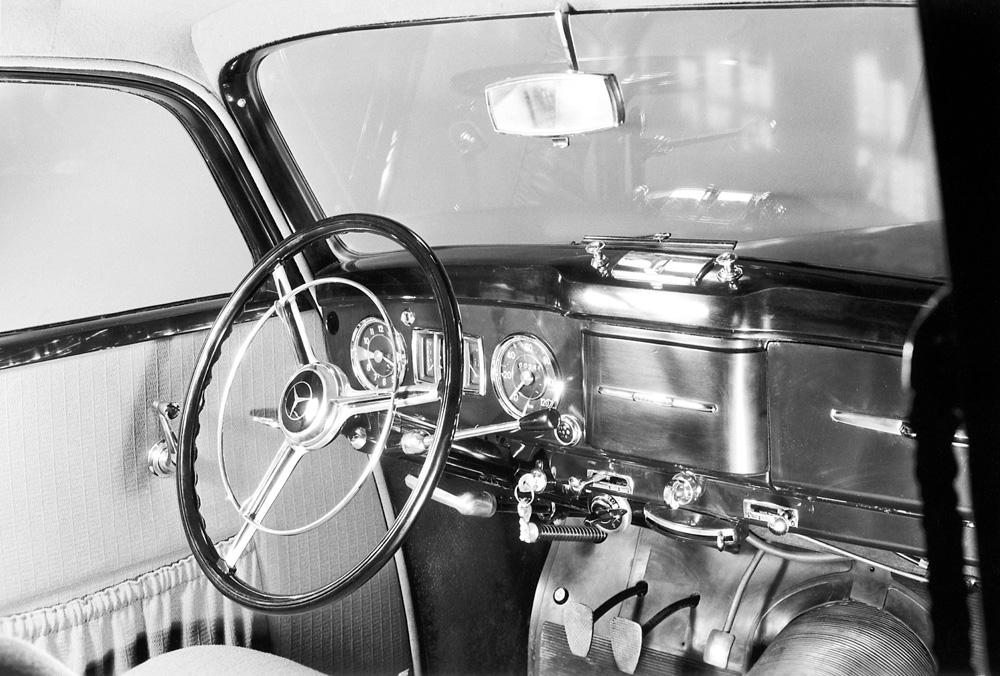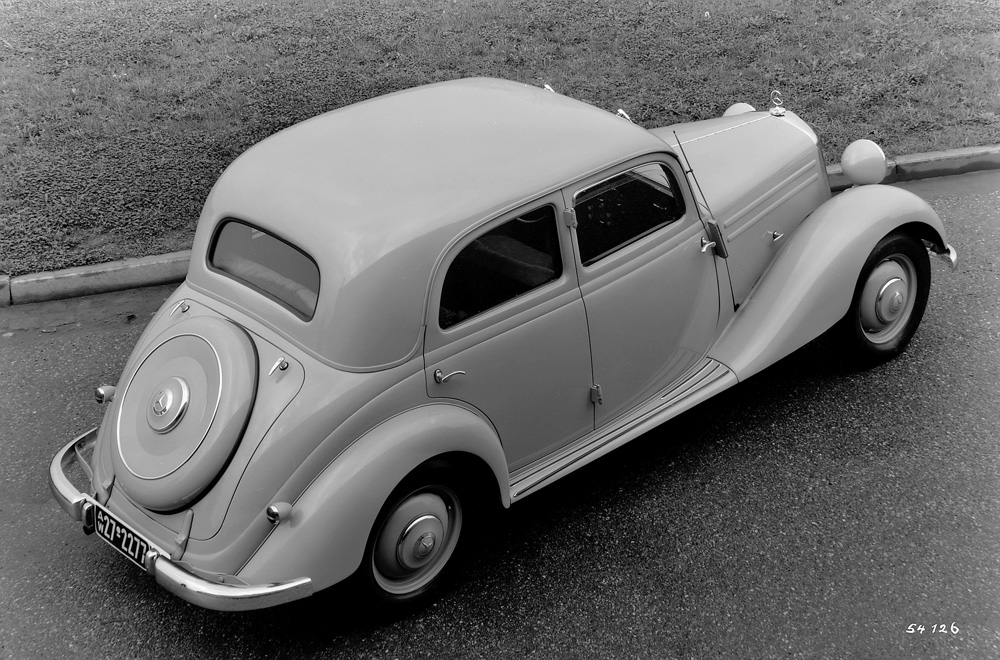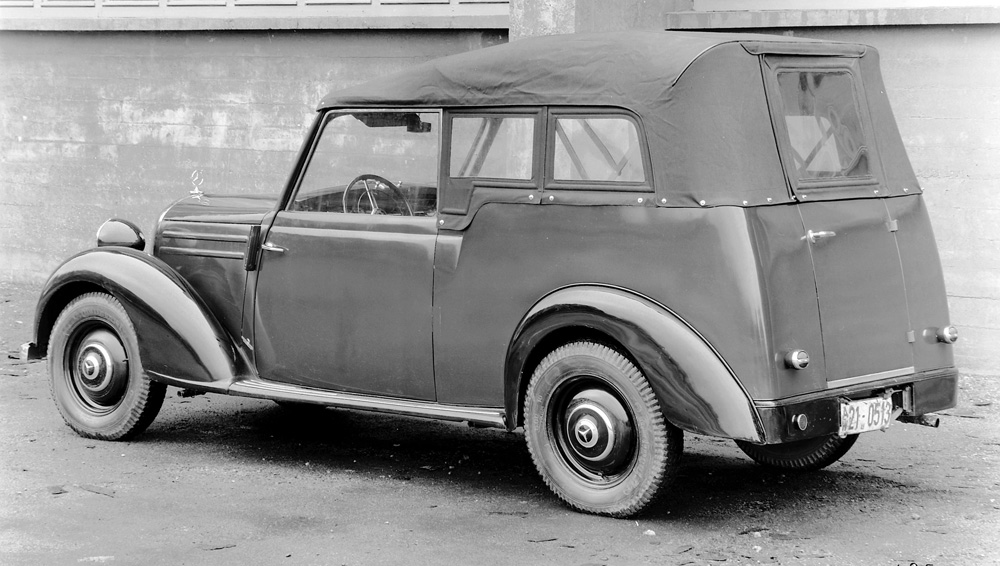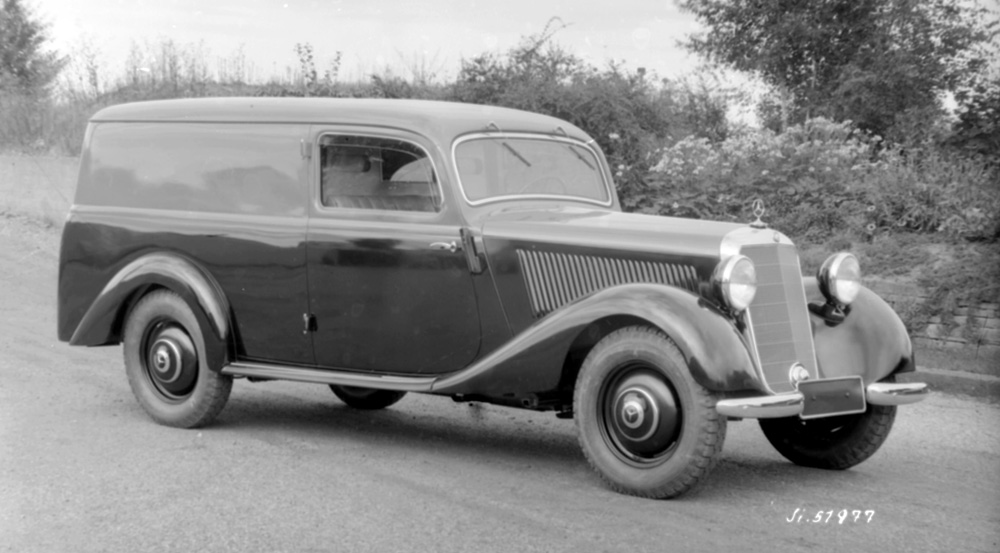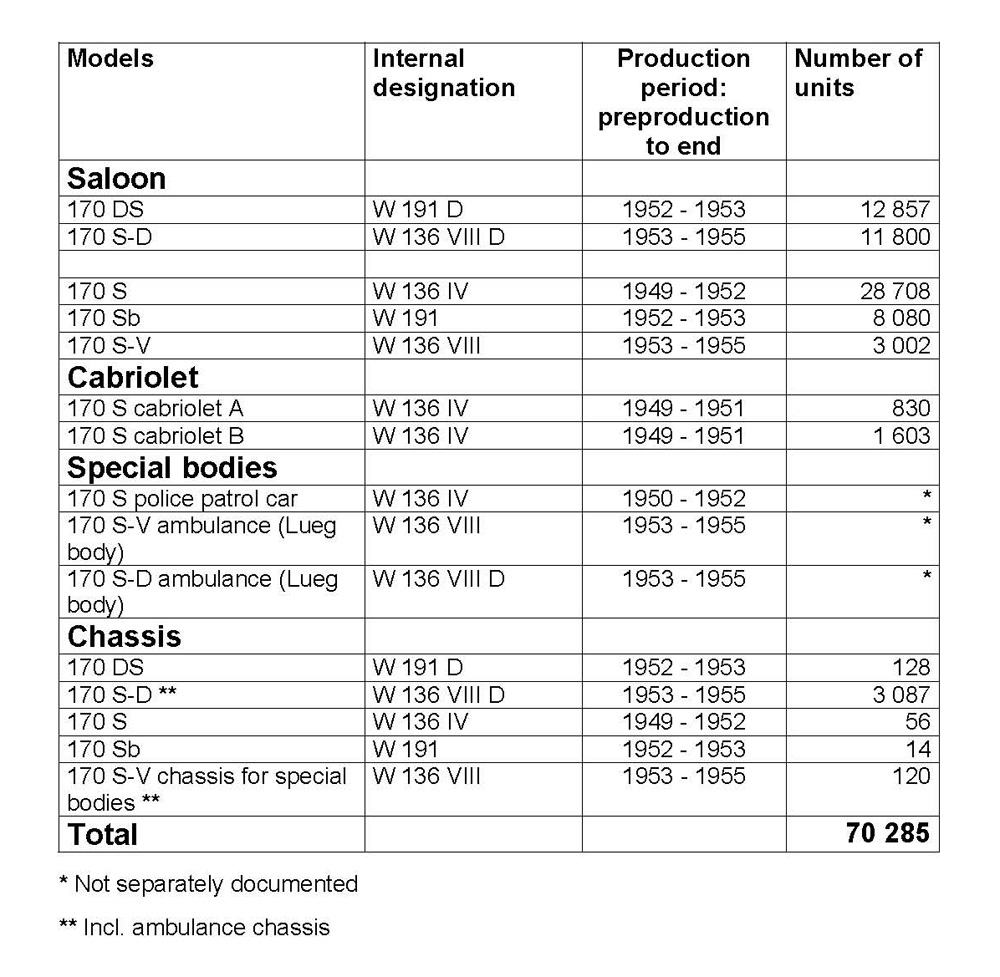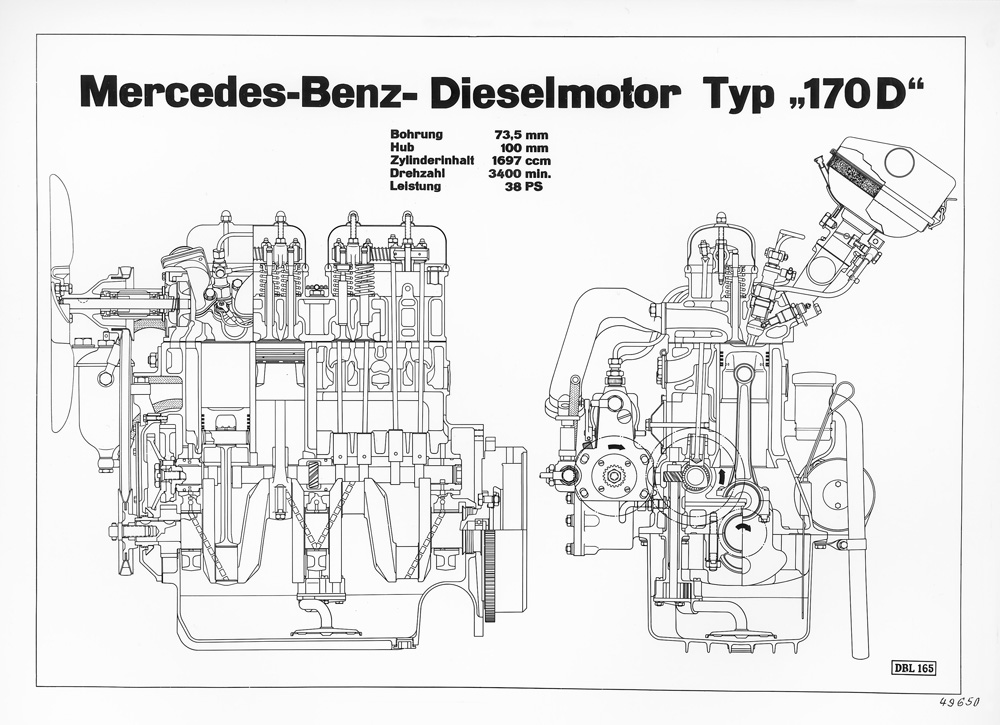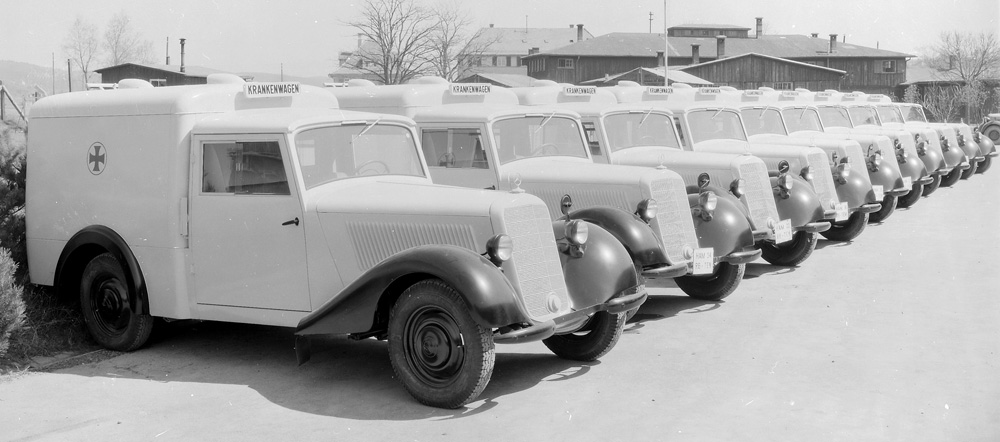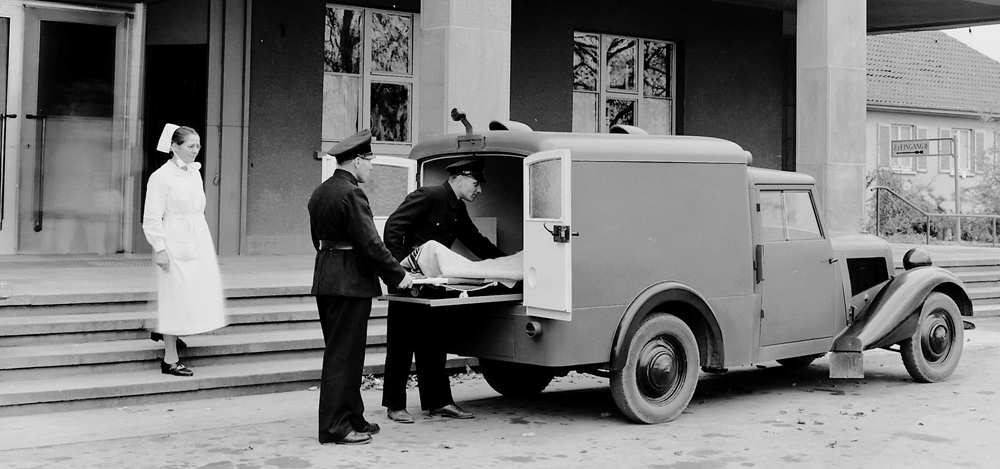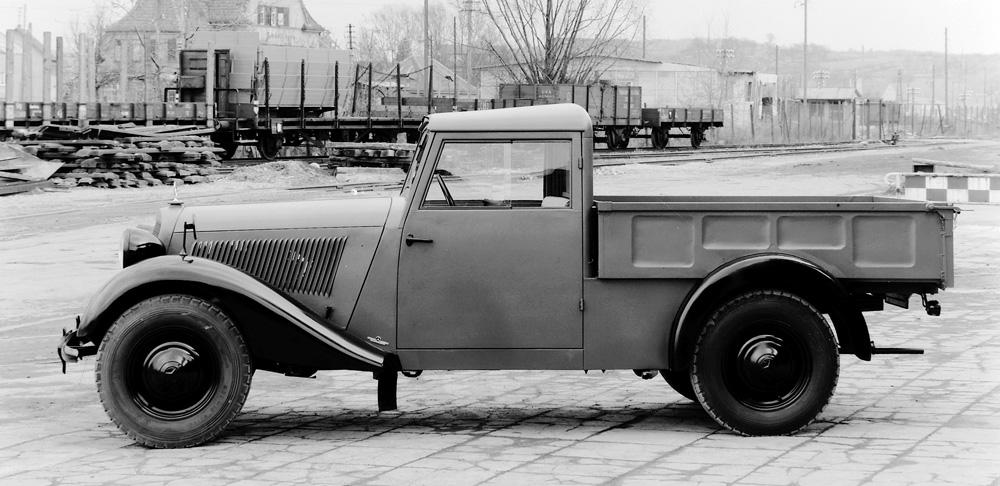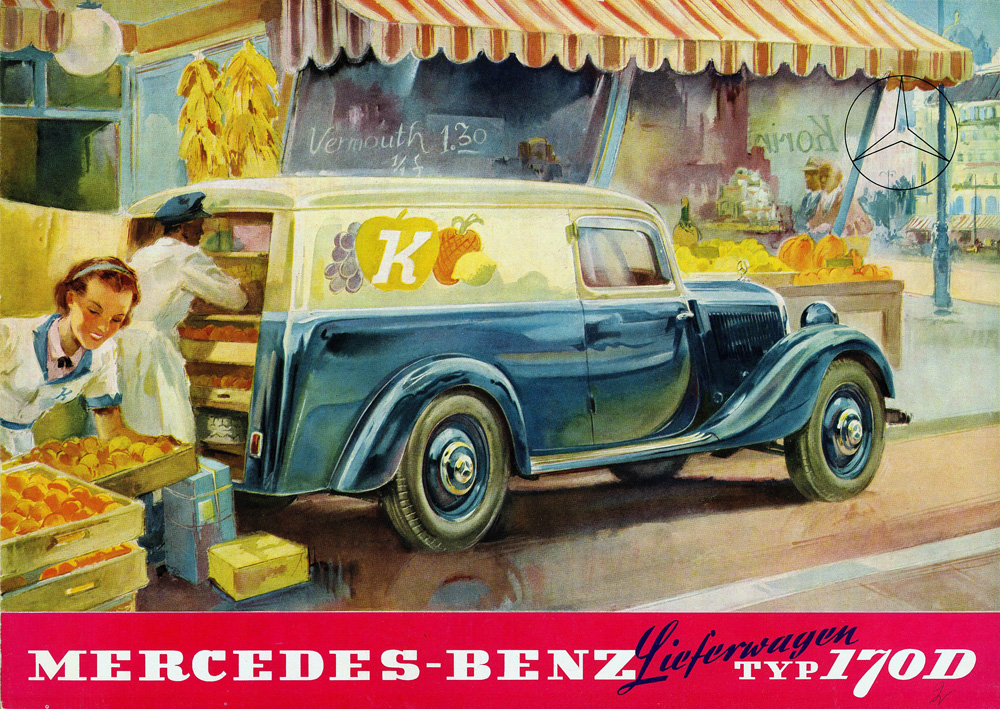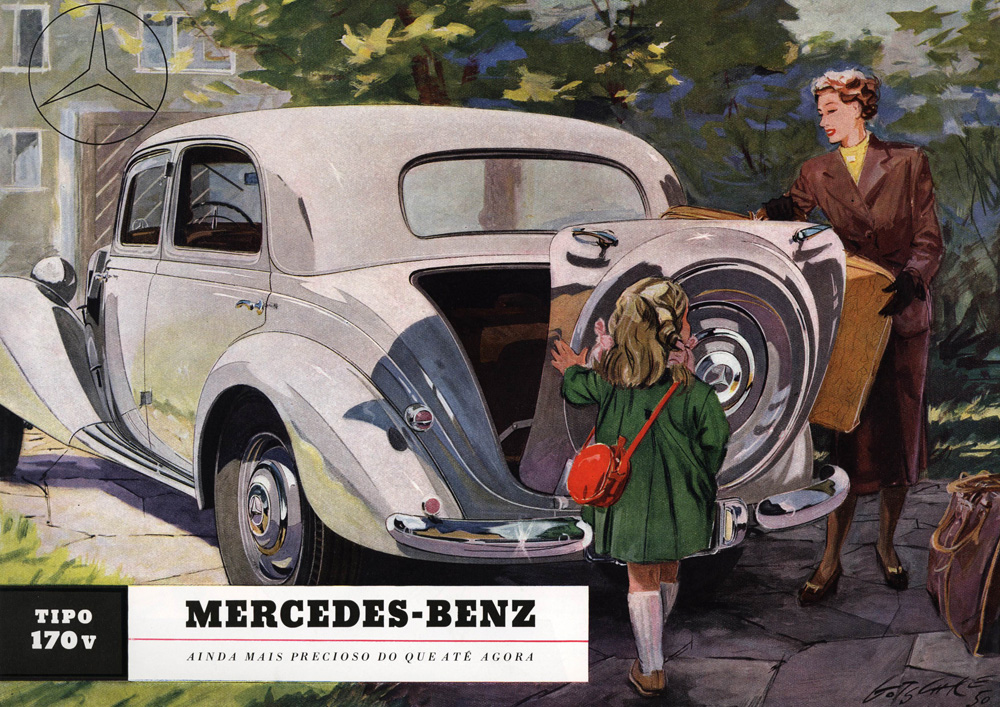|
|
|
Mercedes-Benz 136 and 191 series (1946 to 1955) Under difficult conditions, reconstruction of the Daimler-Benz Untertürkheim plant began in the aftermath of the Second World War. In addition to the destruction caused by the war itself, these pioneering days were marked by a lack of skilled workers, materials and energy. Under such circumstances it was impossible even to consider the development of new models. So when automobile production resumed in 1946 the Stuttgart brand fell back on the 170 V (W 136), a vehicle it had built from 1936 to 1942. The 170 V was also the first direct forerunner of today's E-Class. But instead of elegant saloons of the upper mid-range category, the first vehicles to come off the assembly line were delivery vehicles – pickups and panel vans – along with ambulances and police patrol cars. These commercial vehicles were urgently needed for Germany's reconstruction effort. The new edition of the 170 V model was internally designated the 136 I to distinguish the post-war model from its predecessor. In May 1946 the first vehicle – a pickup truck – left final assembly. It was powered by a 28 kW (38 hp) 1.7-litre four-cylinder engine. In June the first panel van followed, and in September and October Mercedes-Benz introduced an ambulance and a police patrol car based on the 170 V model. The bodies of these model variants were still relatively simple constructions owing to difficult production circumstances during the post-war period. In total, the first year of production aw assembly of 214 vehicles; by 1947 this figure had risen to 1,045. 1947: Return of the saloon July of the same year saw production of the 170 V saloon commence again. To begin with, Mercedes-Benz offered only the four-door saloon. The resumption of passenger car production definitely marks the beginning of the more recent history of the brand's upper mid-range series. The 170 V model set an important trend that extended beyond its own market segment, because initially it was to remain the basis of the first post-war Mercedes-Benz passenger cars, including the 170 D and the 170 S models (both dating from 1949) and its variants. The model series was superseded by the three-box body "Ponton" (W 120) in 1953, although production was not discontinued until 1955. In the representational car segment, on the other hand, the 300 model (W 186 II) made its debut in 1951, along with the Mercedes-Benz 220 (W 187) prestige class saloon. The different versions of the delivery vehicle also profited from the start of production of the saloon in 1947. They now came with a modified cab, the structure and equipment of which met saloon standards. At the turn of the year 1949, the design engineers also adapted the ambulance concept to meet raised demands. The ambulance was given a more spacious, modernised body, which was built in Bochum by the Lueg company.
New elegance on a tried-and-tested basis: The Mercedes-Benz 170 S as a saloon, built from 1949.
First post-war cabriolet: the Mercedes-Benz 170 S as Cabriolet A, built from 1949 to 1951. 1949: First newly developed passenger cars after the war At the Technical Export Fair in Hanover in May 1949, Daimler-Benz introduced the first Mercedes-Benz car models featuring new post-war designs: the diesel model 170 D and the prestigious 170 S saloon derived from the 170 V model. To a large extent the 170 D corresponded to the 170 V model, but it had a 1.7-litre diesel engine, which the Stuttgart engineers developed from the petrol engine of the 170 V model. The prechamber engine developed 28 kW (38 hp), like the petrol engine. The 170 D model was the first Mercedes-Benz diesel car of the post-war period, and as heir to the pioneering diesel-powered Mercedes-Benz 260 D (W 138) of 1936 it laid the cornerstone for the ongoing success of this drive variant in Mercedes-Benz passenger cars. Compared with its petrol-powered twin, the 170 D model consumed appreciably less fuel – yet had almost identical performance. It provided the platform on which was built the good reputation of the company's diesel cars, renowned for their longevity and economy. In addition, in the 170 D model's early production years the ready supply of diesel oil made this model an attractive proposition, whereas even five years after the war petrol was sometimes still hard to find. The 170 S introduced at the same time as the 170 D was the new top model of the Mercedes-Benz car range. It was designed as a successor to the 170 model, but in styling and concept it made stylistic references to the pre-war 230 model (W 153). With its spacious all-steel body, additional comfort, and technical enhancements – which ranged from a more powerful engine to improved front axle – the 170 S model was the top-of-the-line model at Mercedes-Benz until 1951. In addition to the saloon, Stuttgart offered a two-seater cabriolet A and a four-seater cabriolet B. Continuous model refinement In the years that followed, the existing variants of the 170 repeatedly underwent further improvements. As early as May 1950, Mercedes-Benz updated the design of the 170 V and 170 D models. Both got uprated engines through enlargement of the displacement to just under 1.8 litres. The petrol engine now developed 33 kW (45 hp) at 3600 rpm, the diesel generated 29 kW (40 hp) at 3200 rpm. Telescopic shock absorbers, an enlarged rear axle track width and more powerful brakes improved handling. And both models were given larger seats, a wider passenger compartment and a boot that could be accessed from outside. To distinguish them from the original models, internally the improved variants were called 170 Va and 170 Da. In May 1952 the rear track width was enlarged again, and both versions of the 170 were fitted with wide one-piece bumpers and a larger windscreen with an internal covered windscreen wiper drive. The two models were built until August 1953, after which they were followed by the 170 S-V and 170 S-D models. In 1952 the 170 S model was also improved in numerous ways. The revised version, designated the 170 Sb (W 191), now had a steering column gearshift and a button-type starter on the dashboard. The camshaft was driven by a duplex roller chain, the track width of the rear axle was enlarged, and the rear axle drive was fitted with hypoid gearing. However, the engine, a 38 kW (52 hp) four-cylinder (slightly less than 1.8 litres displacement), remained unchanged. From the outside the 170 Sb model could be recognised by its bigger rear window, and by the fact that the boot lid hinges had been moved under the skin. The 170 Sb model was available only as a saloon – production of the two cabriolets had ceased in November 1951. Together with the 170 Sb model, Mercedes-Benz introduced as a new model the 170 DS, fitted with the diesel engine of the 170 Da model. The diesel-powered saloon proved a great hit with buyers and was sold in much higher numbers than its petrol-engined sister model. Basis for special bodies The 170 S-V and 170 S-D models of 1953 marked the final development stage. They came onto the market at almost the same time as the more modern 120 series with three-box body, and combined the largely unchanged chassis of the 170 V and 170 D models with the more spacious body of the 170 Sb and 170 DS models. The lack of chrome strips on the louvres of the bonnet, bumpers without horns, and simplified interior appointments distinguished the weaker-powered models externally from the 191 series. The 170 S-V model was built until February 1955; production of the more successful 170 S-D model did not cease until September of that year. The 136 and 191 series were also offered as chassis, which various bodybuilders furnished with special bodies. Mercedes-Benz themselves also equipped their vehicles with special bodies. For example, panel van bodies for the 170 D model and open police tourers were produced at the Sindelfingen plant. Because of considerable demand for diesel-engined sedans, Mercedes-Benz did not start delivering diesel-engined chassis to external bodybuilding firms until 1950. These coachbuilders then turned them into station wagons, six-seater taxis, ambulances and panel vans. Daimler-Benz even took over the official sale of ambulances equipped with Lueg bodies. The Stuttgart company delivered a considerable number of chassis to foreign coachbuilders, a large percentage of them going as ckd kits (completely knocked down – vehicle construction kits) to Argentina.
Beautiful silhouette against a homely backdrop: Mercedes-Benz 170 V from the W 136 series, built from 1947 onwards
Pre-war genes: In styling and engineering the Mercedes-Benz 170 Va and 170 Da saloons of 1950 had their roots in the time before the Second World War.
Custodians of the law drive topless: Mercedes-Benz built the 170 Da OTP (Open Tourer Police) as a special model from 1951 to 1952.
Chrome trim on request: Customers could order the "Diesel" lettering on the radiator grille of the Mercedes-Benz 170 D Saloon (built from 1949 on) as they pleased.
Engaging gears: Steering column gearshift of the 1952 Mercedes-Benz 170 DS
Flowing lines: The Mercedes-Benz 170 Vb developed 45 hp (33 kW) and was built from 1952 to 1953.
Putting the police on wheels: Mercedes-Benz 170 S patrol car, built from 1950 to 1952
Also a Sindelfingen body: Panel vans like the 170 Da were manufactured from 1951 to 1953 at the Sindelfingen factory.
Mercedes-Benz diesel engine from the 170 D, drawing in a 1951 brochure
Mercedes-Benz Type 170 V ambulance (W 136 I series) of 1946
Ambulance service was an urgent task. These Mercedes-Benz 170 V ambulances were some of the first vehicles to be produced when the Second World War came to an end.
The beginning: Vehicles like the Mercedes-Benz 170 V pickup (built from 1946 to 1947) marked a fresh start for Mercedes-Benz with intermediate range vehicles after the Second World War.
(above) The fruit and vegetable business was doing well: Hans Liska drew this Sindelfingen-bodied panel van for a 1952 brochure. It was based on the Mercedes-Benz 170 Da and 170 Va. (below) The car for the "economic miracle": Mercedes-Benz 170 V from the W 136 I series, built from 1947 onwards.
|
|
Home < Mercedes-Benz < Mercedes-Benz Cars < Historical Models < 1959-1946
|
